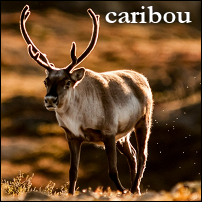The Wolf: A fact file
What exactly is a Wolf?
 The wolf (Canis lupus) is a large predator of the Canidae family. Wolves are similar to some dog's in appearance, however they are very different in how they act and think. Wolves have a long muzzle, powerful jaws and a large head along with rounded ears, intelligent golden-yellow eyes and a thick fur coat. Their fur colour varies from white to a black depending on their subspecies, but also includes all the colours in between such as: white, red, brown, and grey-brown — think of all the colours of wolves we have at the Wolf Trust!
The wolf (Canis lupus) is a large predator of the Canidae family. Wolves are similar to some dog's in appearance, however they are very different in how they act and think. Wolves have a long muzzle, powerful jaws and a large head along with rounded ears, intelligent golden-yellow eyes and a thick fur coat. Their fur colour varies from white to a black depending on their subspecies, but also includes all the colours in between such as: white, red, brown, and grey-brown — think of all the colours of wolves we have at the Wolf Trust!

Male wolves are usually heavier and taller than the female wolves who tend to be slighter in the frame, yet females are no less impressive. All wolves have strong, muscular bodies designed to hunt prey however they vary in size depending on their subspecies. They can survive in temperatures as low as -50°C and as high as 40°C, they also have a keen sense of smell and hearing.
What do wolves eat?
Wolves main food source is meat as they are carnivores, which is a group of animals (including bears and foxes) who eat meat almost exclusively, and because this means they prey upon other animals they are also predators. Most of the wolves' main prey can run faster than them so wolves hunt in packs and work together by using their bodies to communicate to catch their food. Have you heard the saying “wolfing it down”? A wolf can eat around 9 kilograms of food in one meal, that’s about the same as eating 80 hamburgers!
The most popular sources of food for wolves are large, hooved animals such as elk, bison, caribou and moose. When they hunt as a pack it means that they can hunt animals bigger than themselves which means they all can eat. However, they also hunt smaller animals, often individually, such as hares, beavers, birds, fish and even mice to help to keep their bellies full! A small part of their diet is fruit and berries when they are in season as they taste and smell sweet and sugary! Below are some pictures of the animals they hunt; can you work out how they try to avoid being eaten?




How are dogs related to wolves?
Some species of dog (such as a German Shepherd) can look a little similar to wolves, while some can look very different. Dog's were domesticated from wild wolves, much like the ones you can see at the Wolf Trust, by humans. The process in which dogs evolved is called domestication, and it happened many thousands of years ago.
No one is completely sure how domestication took place, of course, because no one who was there when it happened is alive now to tell us how! Also, because the process of wolves evolving into dogs would have taken a long time it was a slow process and therefore undocumented. The most popular theory on how domestication happened is the "rubbish dump" theory where wolves, being opportunistic scavengers, would likely have approached humans while scavenging on the edge of human settlements. The bold but aggressive wolves were likely to have been killed, whereas the bold but friendly ones would have been tolerated. This "friendliness" towards humans also coincided with a change in appearance for the wolves - they started to have wagging tails, patterned coats and even floppy ears in some cases. Then, gradually over the years, these animals evolved into today's dogs.




